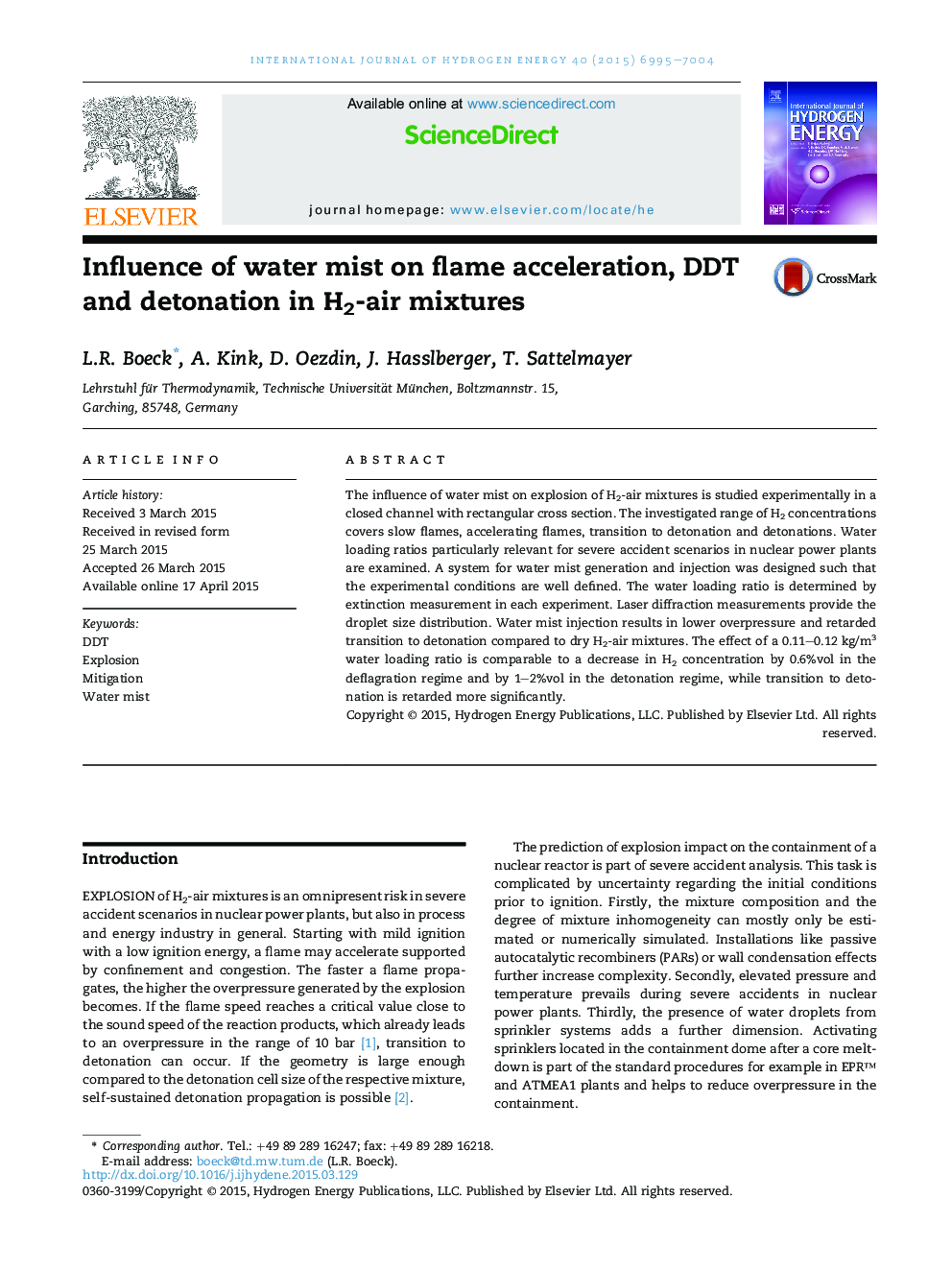| Article ID | Journal | Published Year | Pages | File Type |
|---|---|---|---|---|
| 1271209 | International Journal of Hydrogen Energy | 2015 | 10 Pages |
•We investigate the influence of water mist on explosions in H2-air mixtures.•H2 concentrations up to 30%vol and water loading ratios of up to 0.12 kg/m3 are examined.•We discuss slow flames, fast flames, transition to detonation and detonation propagation.•Water mist reduces overpressure in all combustion regimes.•Deflagration-to-detonation is retarded by water mist, detonations propagate slower.
The influence of water mist on explosion of H2-air mixtures is studied experimentally in a closed channel with rectangular cross section. The investigated range of H2 concentrations covers slow flames, accelerating flames, transition to detonation and detonations. Water loading ratios particularly relevant for severe accident scenarios in nuclear power plants are examined. A system for water mist generation and injection was designed such that the experimental conditions are well defined. The water loading ratio is determined by extinction measurement in each experiment. Laser diffraction measurements provide the droplet size distribution. Water mist injection results in lower overpressure and retarded transition to detonation compared to dry H2-air mixtures. The effect of a 0.11–0.12 kg/m3 water loading ratio is comparable to a decrease in H2 concentration by 0.6%vol in the deflagration regime and by 1–2%vol in the detonation regime, while transition to detonation is retarded more significantly.
